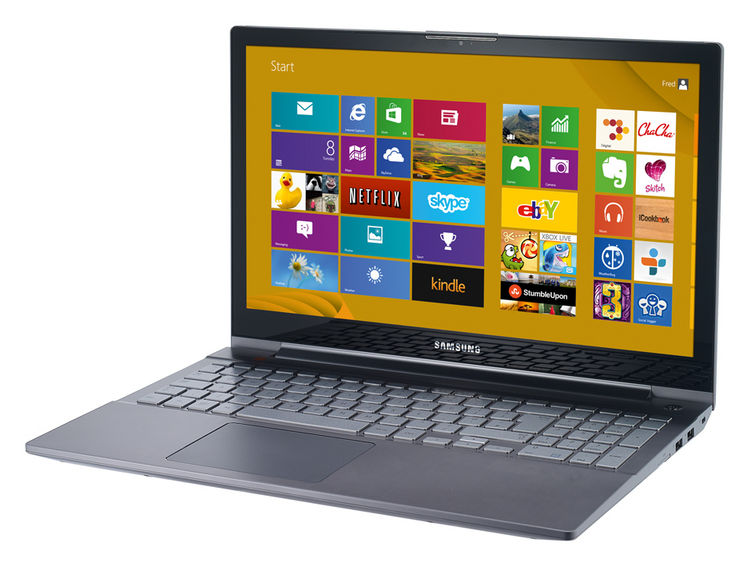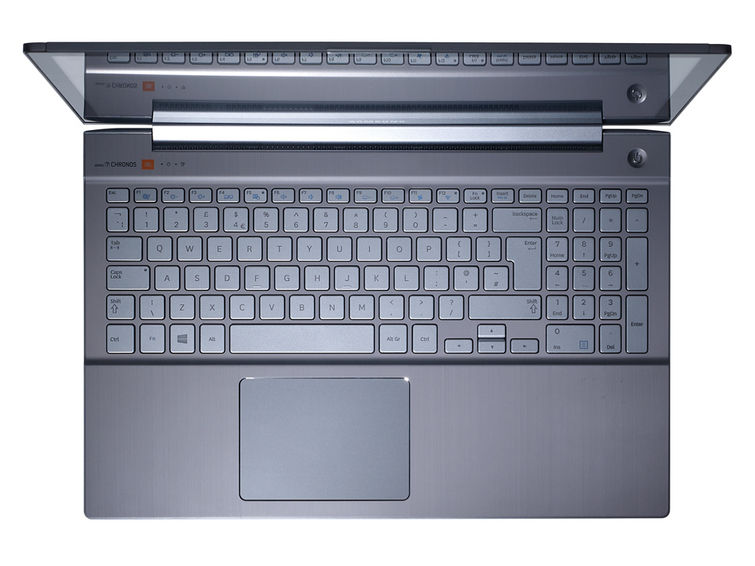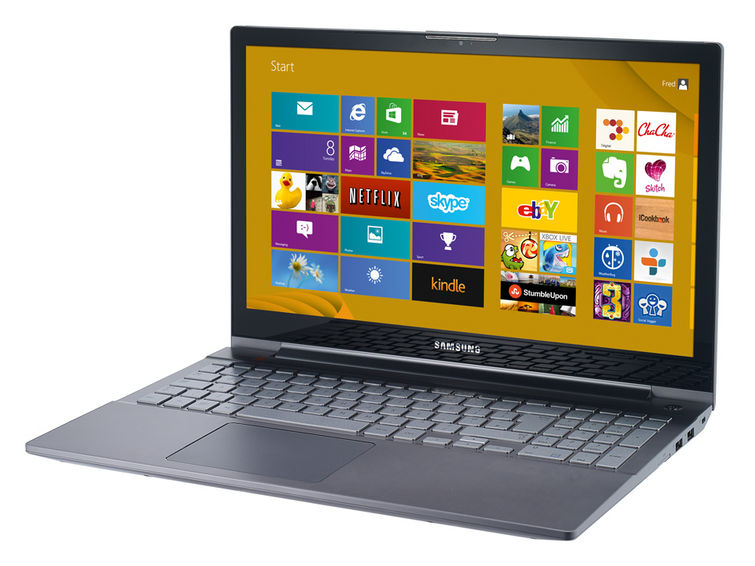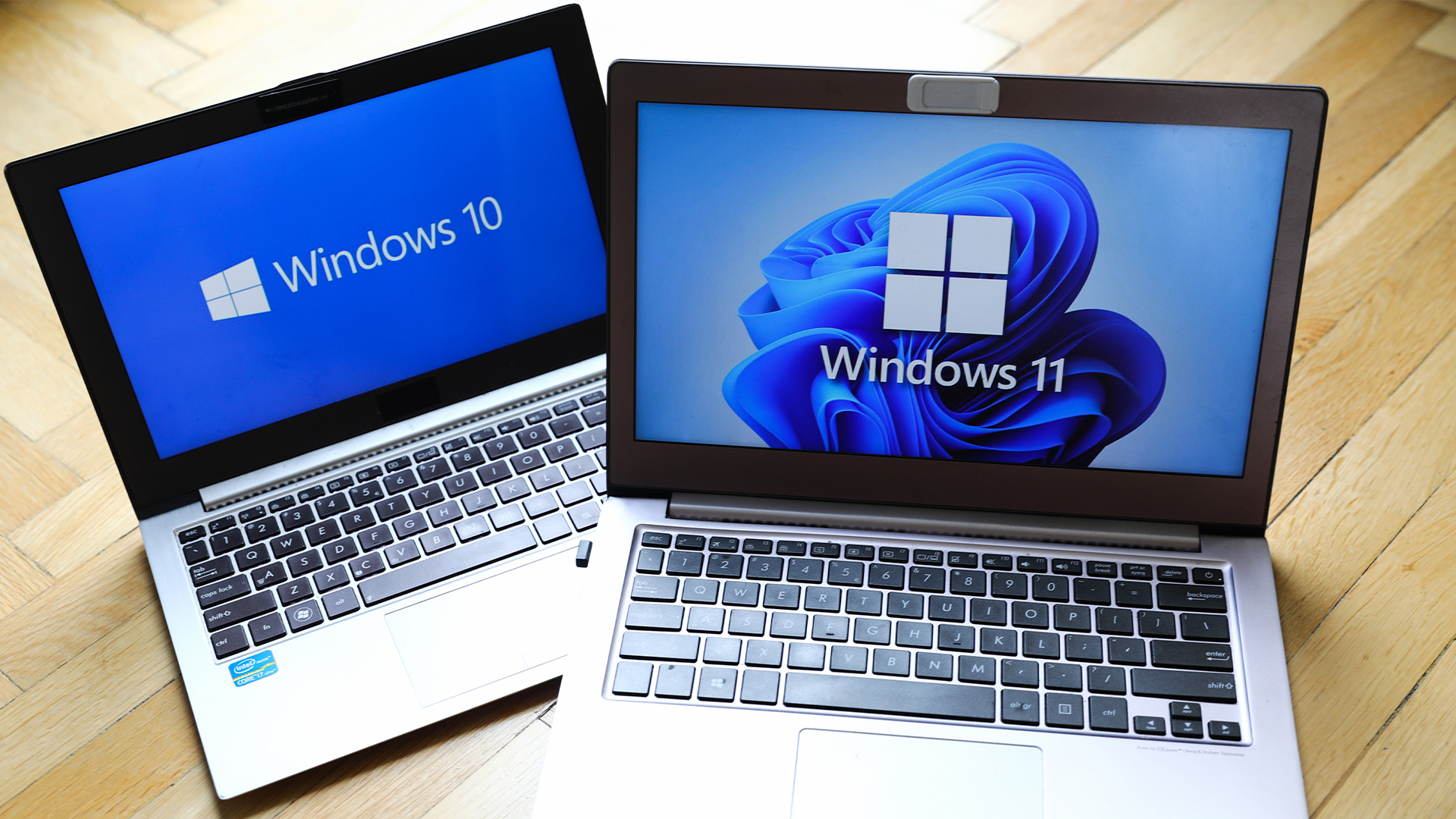Samsung Series 7 Chronos review
Samsung unleashes a high-end desktop replacement, but can the Series 7 Chronos topple the mighty MacBook Pro?

With a high-end quad-core processor, discrete graphics and one of the best keyboards available on the market the Chronos 7 is the Windows 8 laptop of choice if money isn't a problem. The pixel density may not be as high as the MacBook Pro, but it's £400 cheaper.
-
+
Great design; Superb touchscreen; Impressive application and graphics power; Decent battery life
-
-
Slow storage; Strength of competition

Laptops are still doing roaring trade because of the aggressive marketing of Intel's Ultrabook brand. Devices such as the Samsung's Series 7 Chronos in particular attract attention from end-users because of the quality. But is 1300 ever justifiable for laptop?
Aluminum design
This machine is an update to the original Chronos, which was released in 2012, and Samsung hasn't messed with a winning formula the exterior design remains unchanged from the older model. The machine is almost entirely built from brushed aluminum, and this makes it sturdy and beautiful. The lid's brushed finish is only disturbed by a chrome-effect Samsung logo, and the base is similarly sleek and minimal.
We're fans of the smaller touches that litter the Chronos' exterior. The Scrabble-tile keyboard squats in a recessed band across the base of the machine, and the trackpad is a smart slab of metal. There aren't many signs of ugly stickers to disturb the aesthetic, either just a couple of small logos and glimmering status lights.

Build quality is superb and reflects the premium price. We twisted the screen from side to side and it barely flexed, and there's little give to be found in either the wrist-rest or the base. It's what we'd expect given the high-quality design and the sheer size of this machine: the 30mm girth and 2.5kg weight the Chronos is much heavier than the chunkiest Ultrabooks, and it's also 12mm and 500g larger than the latest MacBook Pro.
Any qualms about the Chronos' sheer size vanish when it's used. The keyboard is one of the best we've typed on: a rock-solid base and a comfortable, consistent typing action appease any worries about the slight lack of key travel. Every button is backlit, there's room for a number pad on the right-hand side, and there are full-size keys throughout. It's just as good as the MacBook Pro's offering.
The touchpad is just as good. It supports all of Windows 8's edge-swipe gestures, and its responsive, smooth surface depresses with a crisp click. Only at the top of the pad, where it's hinged, is it difficult to press, but that's hardly a criticism we can level fairly at just this device.
Pixel perfect
The Samsung's 15.6in screen boasts the 1,920 x 1,080 resolution we'd expect to see on a high-end laptop in 2013. It also supports a ten-point touchscreen.
That's an advantage over the non-touch MacBook, and the Samsung's panel is responsive and accurate in use. The glossy black bezels are wide, and flush with the screen, so there are no issues when it comes to using edge-swipe gestures from any angle.

Image quality is excellent. The measured Delta E of 2.5 ensures colour accuracy, and the brightness level of 254cd/m2 is good it makes for vivid colours without oversaturation. The contrast ratio of 806:1 means punchy images, and viewing angles are top-notch. It's one of the best screens we've seen on a laptop, and it's not marred by any grain from the touchscreen layer something many of its rivals can't boast.
There's a sting in the tail, though, and it's the MacBook Pro. Apple's display is a little brighter, its colours are slightly more accurate, and its Retina resolution of 2,880 x 1,800 makes it even sharper than Samsung's panel.
Get the ITPro daily newsletter
Sign up today and you will receive a free copy of our Future Focus 2025 report - the leading guidance on AI, cybersecurity and other IT challenges as per 700+ senior executives
Mike Jennings has worked as a technology journalist for more than a decade and has been fascinated by computers since childhood, when he spent far too long building terrible websites. He loves desktop PCs, components, laptops and anything to do with the latest hardware.
Mike worked as a staff writer at PC Pro magazine in London for seven years, and during that time wrote for a variety of other tech titles, including Custom PC, Micro Mart and Computer Shopper. Since 2013, he’s been a freelance tech writer, and writes regularly for titles like Wired, TechRadar, Stuff, TechSpot, IT Pro, TrustedReviews and TechAdvisor. He still loves tech and covers everything from the latest business hardware and software to high-end gaming gear, and you’ll find him on plenty of sites writing reviews, features and guides on a vast range of topics.
You can email Mike at mike@mike-jennings.net, or find him on Twitter at @mikejjennings
-
 AI is helping bad bots take over the internet
AI is helping bad bots take over the internetNews Automated bot traffic has surpassed human activity for the first time in a decade, according to Imperva
By Bobby Hellard Published
-
 ‘We are now a full-fledged powerhouse’: Two years on from its Series B round, Hack the Box targets further growth with AI-powered cyber training programs and new market opportunities
‘We are now a full-fledged powerhouse’: Two years on from its Series B round, Hack the Box targets further growth with AI-powered cyber training programs and new market opportunitiesNews Hack the Box has grown significantly in the last two years, and it shows no signs of slowing down
By Ross Kelly Published
-
 Dragging your feet on Windows 11 migration? Rising infostealer threats might change that
Dragging your feet on Windows 11 migration? Rising infostealer threats might change thatNews With the clock ticking down to the Windows 10 end of life deadline in October, organizations are dragging their feet on Windows 11 migration – and leaving their devices vulnerable as a result.
By Emma Woollacott Published